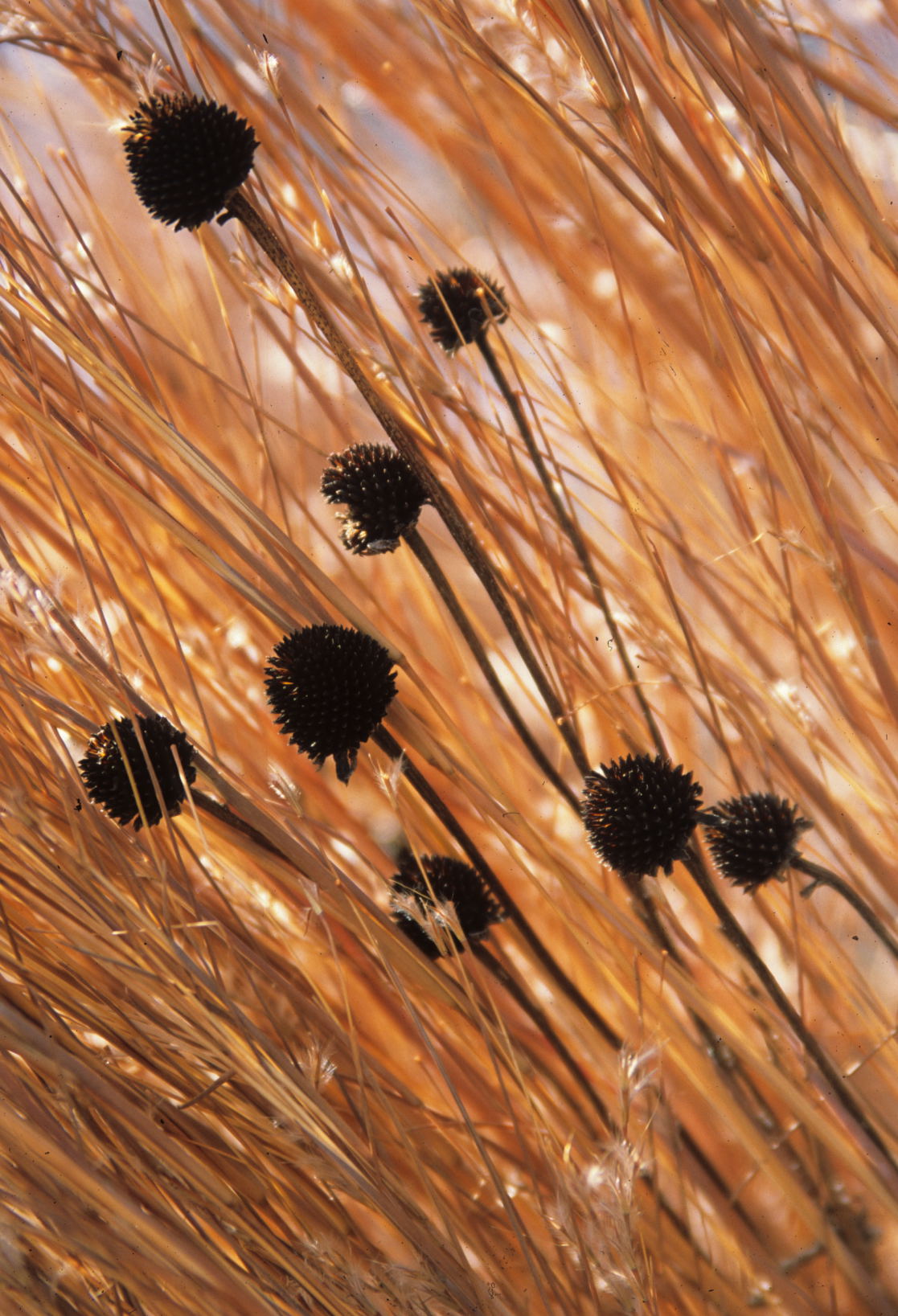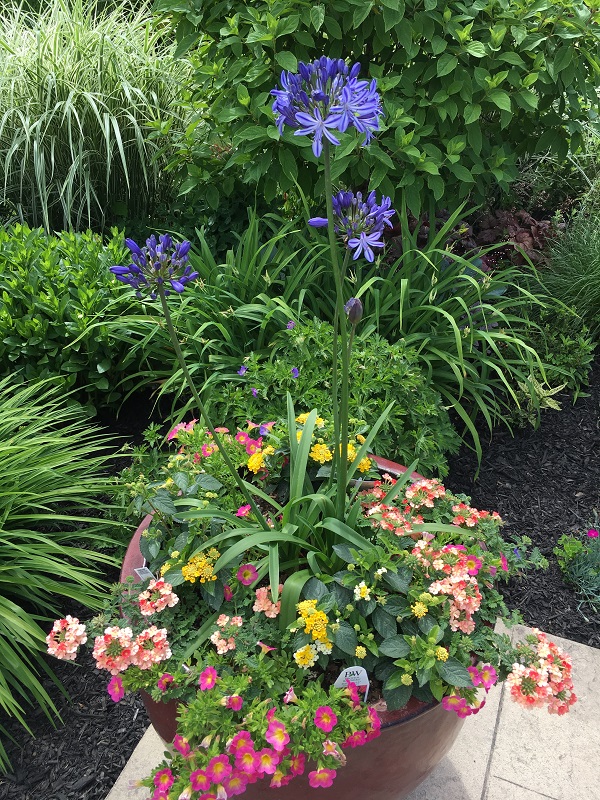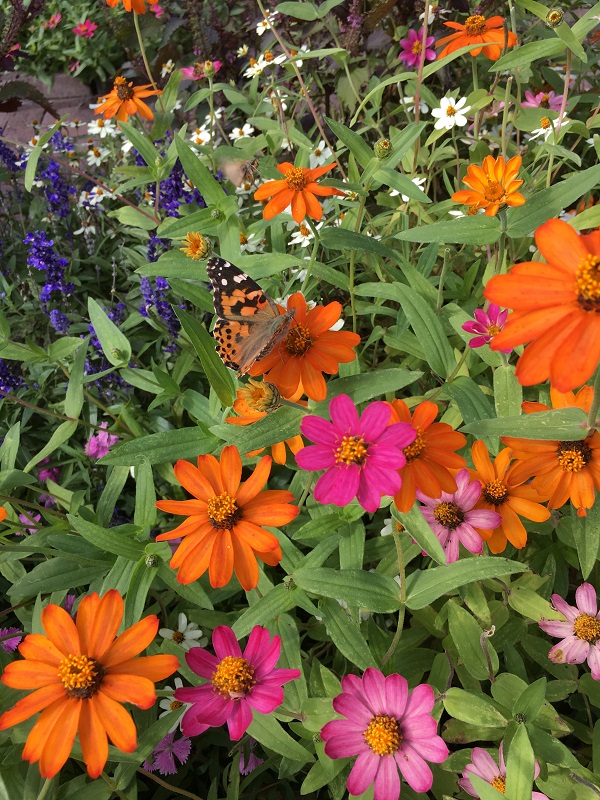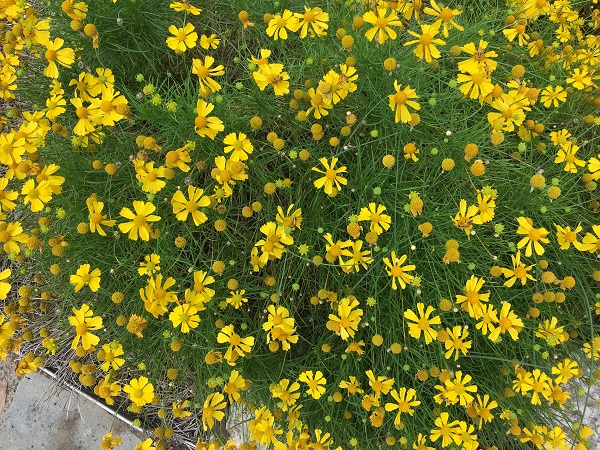It seems that fall has finally arrived. Cooler north winds are blowing and the leaves are beginning to change on the trees. Things are winding down in the garden too, except the asters. ‘Raydon’s Favorite’ aster, New England asters and ‘October Skies’ aster are fantastic this year. Pollinators are covering these nectar rich flowers during the warm afternoons. It is fun to watch so many happy pollinators in the garden. There is so much to love about the fall season.
Soon these flowers will fade and the growing season will officially come to an end. It will be time for the prairie to sleep. But before you put the tools away for the winter, there are a few things to take care of now to prepare your garden for next spring. Here is your Fall Garden Checklist.
Perennials
As a general rule, I leave perennials such as wildflowers and grasses stand through the winter. The forms and textures of plants such as little bluestem and switchgrass provide movement in the garden and should be left standing. Coneflowers, blackeyed susans and coreopsis are important seed sources for birds. The dark seed heads and stems look great with a back drop of little bluestem. I take note of plants that need to be divided and/or moved next February or March. Diseased plants with powdery mildew or rust should be removed. Those infected leaves will harm next year’s plants.
Containers
Even the best container plants start to fade this time of year. The annuals, vegetables or herbs that have been growing in them can be discarded into the compost pile. Ceramic pots need to be emptied of the soil and put away in the garage for the winter. Removing the soil now will prevent cracking the pot with frozen soil. The soil in plastic pots can be left in them, but I like to move them to a place out of the sun so they don’t fade. If the soil is tired, plan on refreshing it by mixing with some new potting soil with it or adding some compost or perlite. A little preparation this fall will have your pots ready when spring arrives.
Lawns
This is an important time for lawn care. Obviously, the leaves that fall must be removed or composted into the lawn. More frequent mowing/composting can take care of a majority of the leaves, but if you have large trees the leaves must be removed. A large covering of leaves will smother your lawn. It is also an ideal time to fertilize cool season grasses. The nutrients will be taken up and stored in the roots for vigorous growth next year. If you have a warm season lawn such as buffalograss, now is the perfect time to control winter annuals such as henbit, dandelions and bindweed. Spraying with a broadleaf weed killer such as 2,4-D will clean up your lawn for next season. Be sure you’re using a spray that is labeled for buffalograss.
Leaves
I purposely don’t remove some leaves in perennial beds to insulate the plants. In a shade garden, they are perfect as mulch. Just don’t let them get so thick that they smother out your woodland plants. Leaves make great compost that can be used in your garden or flower beds.
Annuals
I learned something new on our field trip to Lenora Larson’s garden. She has chosen annual varieties that self-seed, but that pollinators love. She lets the plants stand through the winter and then composts them into the soil where they grew last year. These composted plants are a fantastic mulch and add nutrients back to the soil. The next season, she lightly thins the plants that germinate and the cycle is repeated the next year. Her plants are thriving and she has very few problems with disease or insects. Her approach to landscaping with pollinator-friendly wildflowers, annuals, grasses and shrubs was stunning. I have never seen so many pollinators in such a small area. Her home was an oasis for pollinators.
Trees
This is the worst time of the year to prune trees. Trees are going dormant and pruning now will encourage new growth that will not get hardened off before cold weather. It is better to take notes of trees that need pruning and remove suckers or limbs when the trees are completely dormant in November through January. Pruning now will only weaken the tree and reduce its winter hardiness.
Bulbs
If you like the spring bulbs, now is the time to plant. I prefer bulbs that naturalize and come back year after year. Narcissus and species tulips are great spring bloomers. They require little or no care and reward us each year with bright blooms. These bulbs are the harbingers of spring. Now is also the time to put away tender bulbs such as cannas, dahlias, and gladioli. Allow them to dry for a few days before storing them in a cool, dry area away from sunlight.
Weeds
Remove weeds when they are young. Getting after them now and keeping your gardens and display beds free of winter annual weeds such a henbit will mean less weeding next spring. A little effort now will allow more time to enjoy your garden next spring.
Spring seems like it is so far away, but it will be here before we know it. By doing a few simple tasks in your garden this fall, you will save yourself time and effort next season. Why not put your garden properly do bed this fall so you can enjoy it more next year? It will be worth your time.





